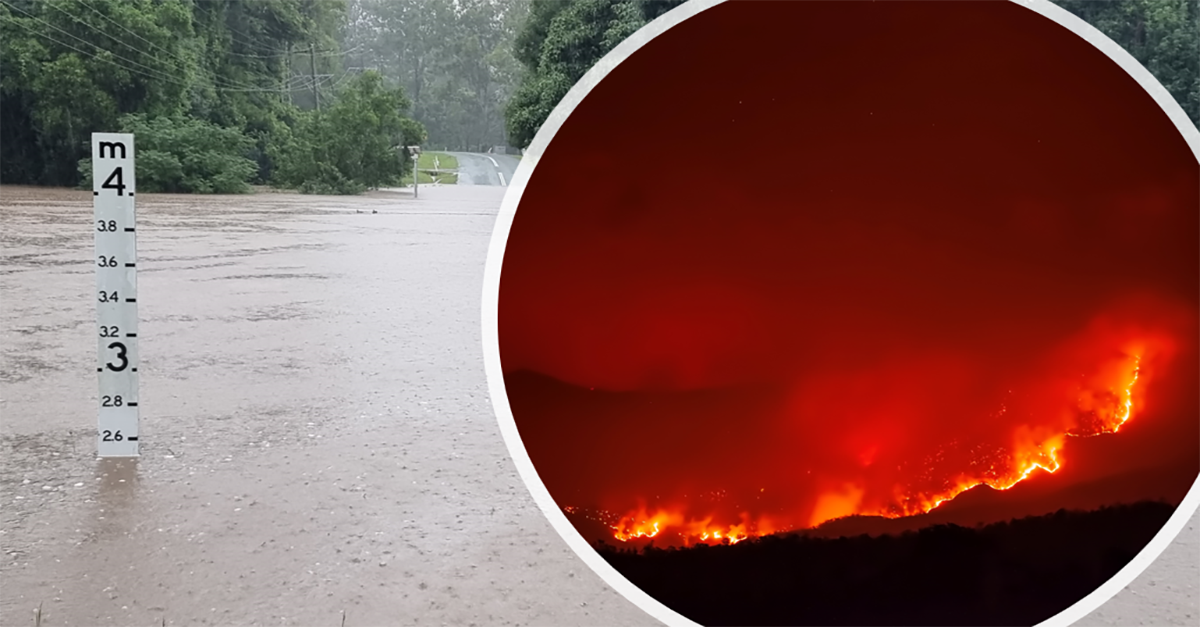Mitigating Fire and Flood Risks: A Comprehensive Strategy for Community Resilience 🌳🌊🔥#### IntroductionNatural disasters, particularly ...
Published on by Hossein Ataei Far, Deputy Manager of the Research, Technology Development, and Industry Relations Center at NWWEC

#### Introduction
Natural disasters, particularly fires and floods, pose significant threats to communities worldwide. A comprehensive risk reduction strategy encompasses prevention, preparedness, response, and recovery phases, ensuring holistic management of these hazards. This master plan outlines a detailed approach to reducing risks associated with fires and floods, supported by references to established practices and guidelines.
#### Phase 1: Prevention 🚫
**1.1 Risk Assessment and Mapping 🗺️**
- **Hazard Mapping: ** Identify fire and flood-prone areas using historical data and predictive models. This involves GIS mapping and collaboration with meteorological and environmental agencies.
- **Vulnerability Assessment: ** Assess community vulnerability by analyzing socio-economic factors, infrastructure resilience, and population density.
*References: *
- National Fire Protection Association (NFPA) standards
- FEMA’s Hazard Mitigation Planning Resources
**1.2 Land Use Planning and Zoning 📐**
- **Zoning Regulations: ** Implement zoning laws that restrict development in high-risk areas.
- **Green Infrastructure: ** Promote green infrastructure like wetlands for flood control and firebreaks for fire prevention.
*References: *
- FEMA’s National Flood Insurance Program (NFIP)
- Environmental Protection Agency (EPA) Green Infrastructure Guidelines
**1.3 Building Codes and Standards 🏠**
- **Fire-Resistant Materials: ** Mandate the use of fire-resistant materials in construction within fire-prone zones.
- **Elevated Structures: ** Require buildings in flood-prone areas to be elevated above the base flood elevation.
*References: *
- International Building Code (IBC)
- NFPA 1144: Standard for Reducing Structure Ignition Hazards from Wildland Fire
#### Phase 2: Preparedness 🛠️
**2.1 Community Education and Awareness 📢**
- **Public Information Campaigns: ** Conduct regular education campaigns on fire and flood risks, preparedness measures, and evacuation plans.
- **Drills and Training: ** Organize community drills and first responder training programs.
*References: *
- American Red Cross Preparedness Programs
- Ready.gov educational resources
**2.2 Early Warning Systems 🚨**
- **Detection and Monitoring: ** Implement advanced detection systems such as remote sensors for fires and flood monitoring stations.
- **Alert Systems: ** Establish robust communication channels for disseminating warnings, including mobile alerts and sirens.
*References: *
- National Weather Service (NWS) Flood Warning System
- NFPA Fire Detection and Alarm Systems standards
**2.3 Emergency Planning 🗂️**
- **Evacuation Plans: ** Develop and regularly update evacuation routes and emergency shelters.
- **Resource Allocation: ** Pre-position resources such as firefighting equipment and flood barriers.
*References: *
- FEMA’s Comprehensive Preparedness Guide (CPG) 101
- National Incident Management System (NIMS)
#### Phase 3: Response 🚒
**3.1 Incident Management 🎛️**
- **Unified Command: ** Establish a unified command structure to coordinate multi-agency response efforts.
- **Incident Action Plans (IAPs): ** Develop and implement IAPs for fire and flood incidents.
*References: *
- Incident Command System (ICS)
- FEMA’s Incident Management Handbook
**3.2 Search and Rescue Operations 🧑🚒**
- **Rescue Teams: ** Deploy trained search and rescue teams equipped for fire and flood scenarios.
- **Logistics and Support: ** Ensure logistical support for rescue operations, including medical care and temporary housing.
*References: *
- National Urban Search and Rescue (USAR) Response System
- Red Cross Disaster Response Guidelines
**3.3 Communication and Coordination 📞**
- **Interagency Collaboration: ** Foster coordination among local, state, and federal agencies.
- **Public Communication: ** Provide timely and accurate information to the public and media.
*References: *
- National Response Framework (NRF)
- FEMA’s Public Information Officer (PIO) Program
#### Phase 4: Recovery 🔄
**4.1 Damage Assessment 🧩**
- **Rapid Assessment Teams: ** Deploy teams to assess the extent of damage immediately after the disaster.
- **Impact Analysis: ** Conduct thorough analyses to guide recovery efforts and future mitigation strategies.
*References: *
- FEMA’s Damage Assessment Operations Manual
- U.S. Geological Survey (USGS) Post-Flood and Fire Assessment Guidelines
**4.2 Rehabilitation and Reconstruction 🏗️**
- **Infrastructure Repair: ** Prioritize the repair and upgrading of critical infrastructure to better withstand future events.
- **Community Resilience Projects: ** Implement long-term projects such as reforestation, wetland restoration, and resilient housing.
*References: *
- FEMA’s Public Assistance Program
- UNISDR’s Building Resilient Infrastructure and Communities (BRIC)
**4.3 Financial Assistance and Support 💰**
- **Funding Programs: ** Access federal and state disaster relief funds, grants, and loans.
- **Insurance Claims: ** Assist affected individuals and businesses in navigating insurance claims and recovery processes.
*References: *
- FEMA’s Individual Assistance Program
- National Flood Insurance Program (NFIP)
#### Conclusion 📜
Reducing the risks associated with fires and floods requires a multi-faceted approach involving prevention, preparedness, response, and recovery. By leveraging best practices and resources from established guidelines, communities can enhance their resilience against these natural disasters. Ongoing collaboration among government agencies, private sector partners, and the community is crucial to the success of this comprehensive strategy.
This plan provides a structured approach to managing fire and flood risks, drawing on a range of authoritative sources to ensure each phase is grounded in proven practices. By implementing this strategy, communities can better protect lives, property, and the environment from the devastating impacts of these natural hazards
In Victoria, Australia, there were fires one day and flooding the next: https://www.earlywarningnetwork.com.au/news/victoria-fires-one-day-to-flooding-the-next